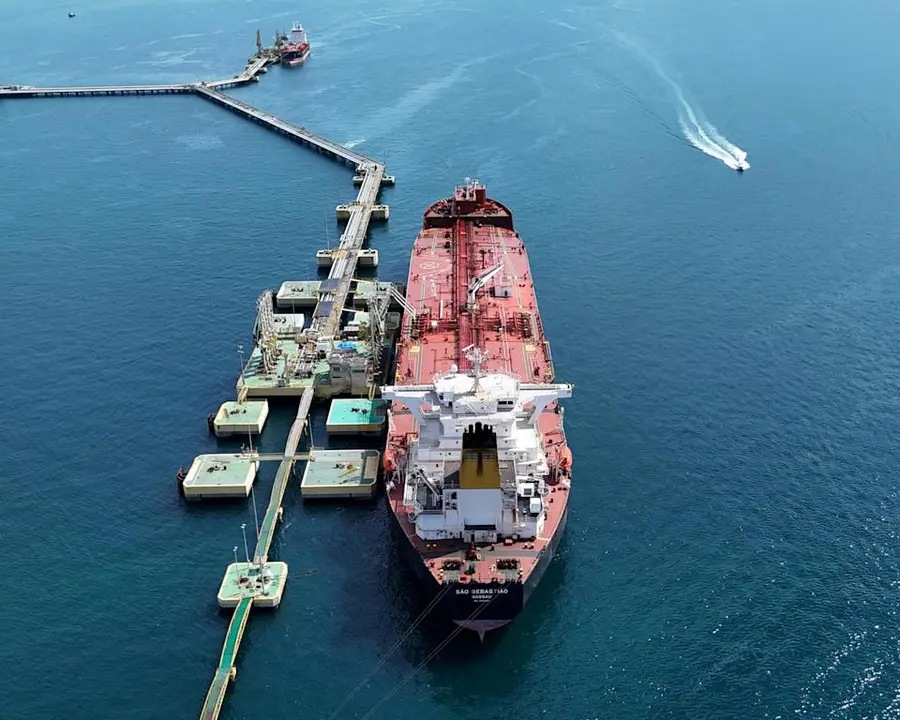Getting more out of a Norwegian gas field
Throughout history, the waters stretching from Norway’s rugged north-western coast have been fraught with danger, the seabed scattered with debris from ships lost to violent storms.
Yet in recent years these seas have become home to a mainstay of Europe’s energy security.
More than 100 kilometres from shore, buried thousands of metres below the seabed, is the gas reservoir Ormen Lange. Operated by Shell, it has been supplying natural gas to the UK and other countries in the region for more than 15 years.
A gas field normally produces most gas in the beginning of its life cycle, and when Ormen Lange was at peak production, it supplied 30% of the UK’s gas demand.
Work is now underway to preserve its status as an energy lifeline for as long as possible, using a feat of under-sea engineering.
The project, named Ormen Lange Phase 3, aims to beat the effects of the natural drop in reservoir pressure triggered by the beginning of extraction.
“We’re taking the recovery rate of the existing Ormen Lange field from its current rate of 75% and increasing it to 85%, unlocking over 40 billion cubic metres of gas,” says project director Richard Crichton.
Richard likens the pressure drop in a gas reservoir to what happens to a fizzy drink.
“When you first open the bottle or can, all the bubbles come out because that’s when pressure in the container is highest,” he says.
“Then after it is released, the drink becomes flatter. When pressure in reservoirs like Ormen Lange declines, it reduces the flow rate of the gas, which has implications for the amount it can supply.”
The project will give the gas an additional push towards the well using two 750-tonne compression stations installed on the seabed.
The compression system will be powered by two 120-kilometre-long cables connected to the Norwegian grid, which last year was powered by around 95% renewable energy. This will lower the carbon intensity of Ormen Lange Phase 3’s gas production process compared with a similar facility powered by fossil fuels.
There are less than a handful of under-sea gas compression systems in the world, and the distance from the gas field to the onshore facility represents an industry first. No other project has attempted to send under-sea power this far. Ormen Lange Phase 3 will also operate without the support of an offshore platform, reducing human risk and the impact on the surrounding environment.
Energy security
Once extracted, gas bound for the UK travels through a pipeline to the onshore processing facility Nyhamna. Impurities are removed and it is sent through the Sleipner platform in the North Sea. From there, the gas is sent along the Langeld pipeline to the Easington terminal in the east of England.
Reliable sources of gas like Ormen Lange have helped the UK to meet demand while progressing towards its climate goal to eliminate coal-fired power generation. The IEA estimates that coal-to-gas switching has saved around 500 million tonnes of carbon dioxide (CO2) globally since 2010.
Gas made up 42.3% of primary energy consumption in the UK in 2021 and in the same year imports of Norwegian gas exceeded the UK’s domestic production for the first time.
“The last couple of years have shown the importance of having reliable partners to cover energy needs as we transition together towards a renewables-based future,” says Jan Thompson, the British ambassador to Norway.
“Norwegian gas will continue to be a key component of the UK’s energy mix in the coming years, and I am pleased that Ormen Lange Phase 3 will help secure the supply going forward.”
A family affair
Last winter, Richard took his 82-year-old mother Sara Crichton, who lives in the UK, to visit the project after she began to probe him about the energy supply chain.
She was given a tour of the facility where the under-sea compression system has been tested, then followed the journey of the gas from the Nyhamna processing plant to the pipeline which delivers the gas to UK homes.
“I couldn’t grasp the complexity of it before I saw it,” says Sara. “It makes me feel very thankful for Norway, that we can import gas.”
Published: 18-07-2024














